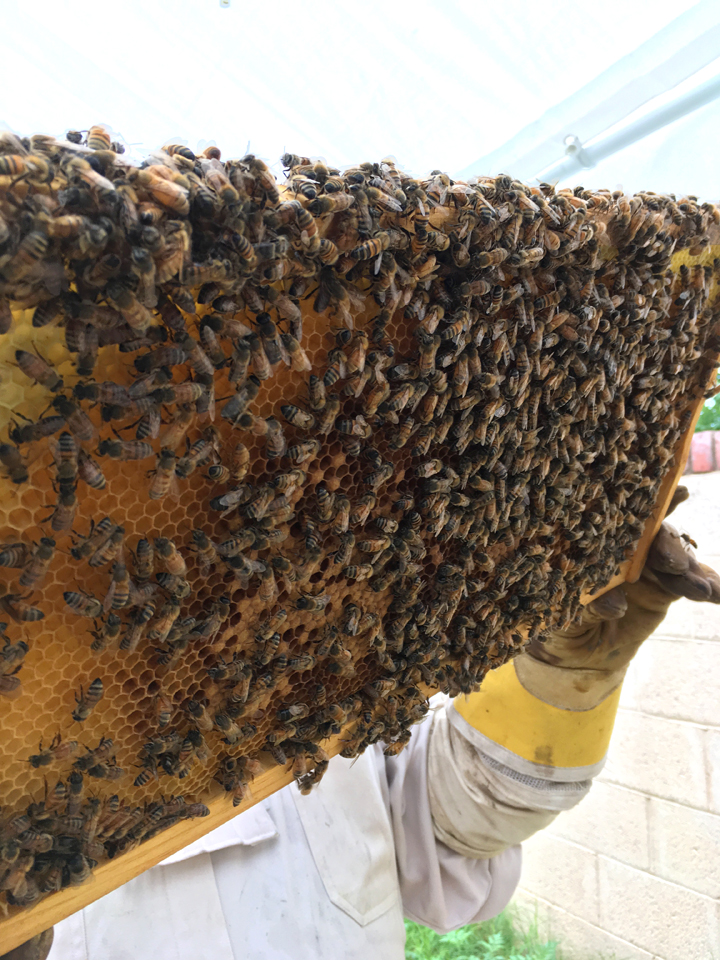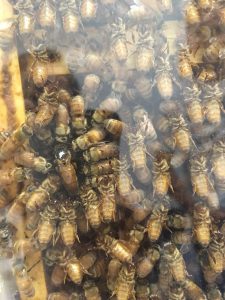The Complexity of a Hive, Part I, The Queen
By Sy Maher
Queen Bee
The hive is a complex environment even though there are only three types of honey bees. The drones, the workers, and the queen.

Hive
Drones (males) hatch out of unfertilized eggs, Workers and queens are females and born out of fertilized eggs. We will get to the other bees later although it is hard to define one bee without mentioning the other two.

Capped queen cell opened to show queen pupa (with darkening eyes).
Worker bees create about twenty wax chambers called Queen Cells. The reigning queen then lays fertilized eggs in each cell. Nurse bees feed the young queen larvae with a food called royal jelly. Royal jelly is a honey bee secretion that is used in the nutrition of larvae. Approximately nine days later the queen cells are sealed with a layer of wax.
One reason a new queen is needed is the hive is overpopulation. That’s why we see swarms moving about Arizona several times a year. Arizona State University warns us to always assume swarms are Africanized in the state of Arizona. In a beekeeper situation, keepers anticipate, and/or manipulate overcrowding by splitting the hive.
Queens also die, but the hive will prevail. Workers find a suitably aged egg and provide it with royal jelly, and a new queen is born. The new queen sips additional royal jelly fed to her by nurse bees with her tongue through the cell wall before emerging. About sixteen days later the queen springs forth from her cell strong, and ready to do her job.
The new queen will kill other potential queens by stinging them through the wax wall of their cells. If two queens emerge, they will fight to the death. However, if the hive is still overcrowded the new queen will swarm, and the process of making a new queen repeats.
In the hive, the young queen acclimates her workers to her pheromones and acquaints herself to her new surroundings. She only leaves the hive two times in her life; to swarm and on her maiden mating flight.
Just days later the queen will begin to lay fertilized eggs at a rate of about 2000 per day.
She is an amazing creature. But just who does call the shots? Visit Lucky Bee next time for parts two and three.
Source
https://cals.arizona.edu/urbanipm/buglist/bees.pdf



2 thoughts on “The Complexity of a Hive, Part I, The Queen”